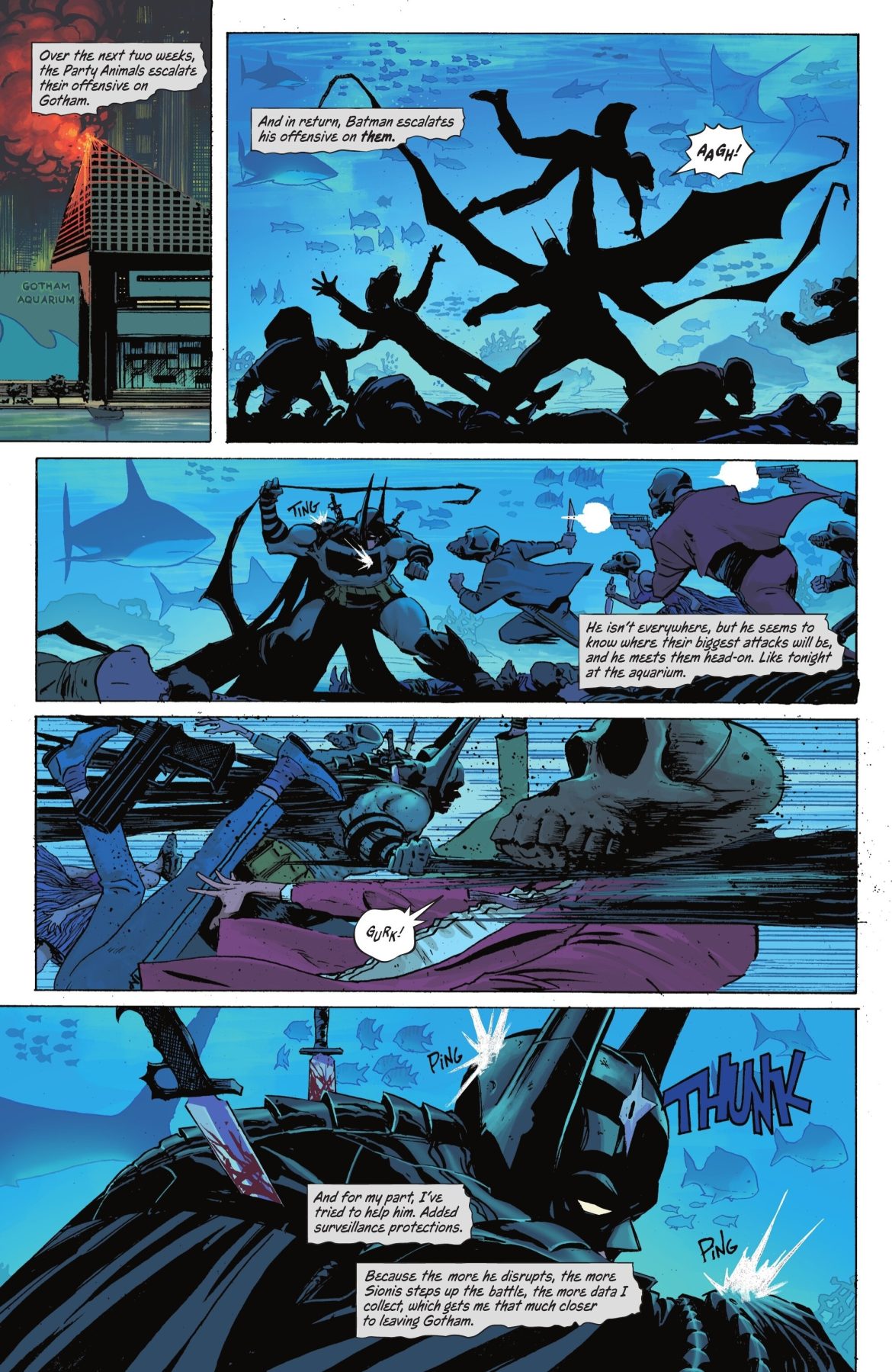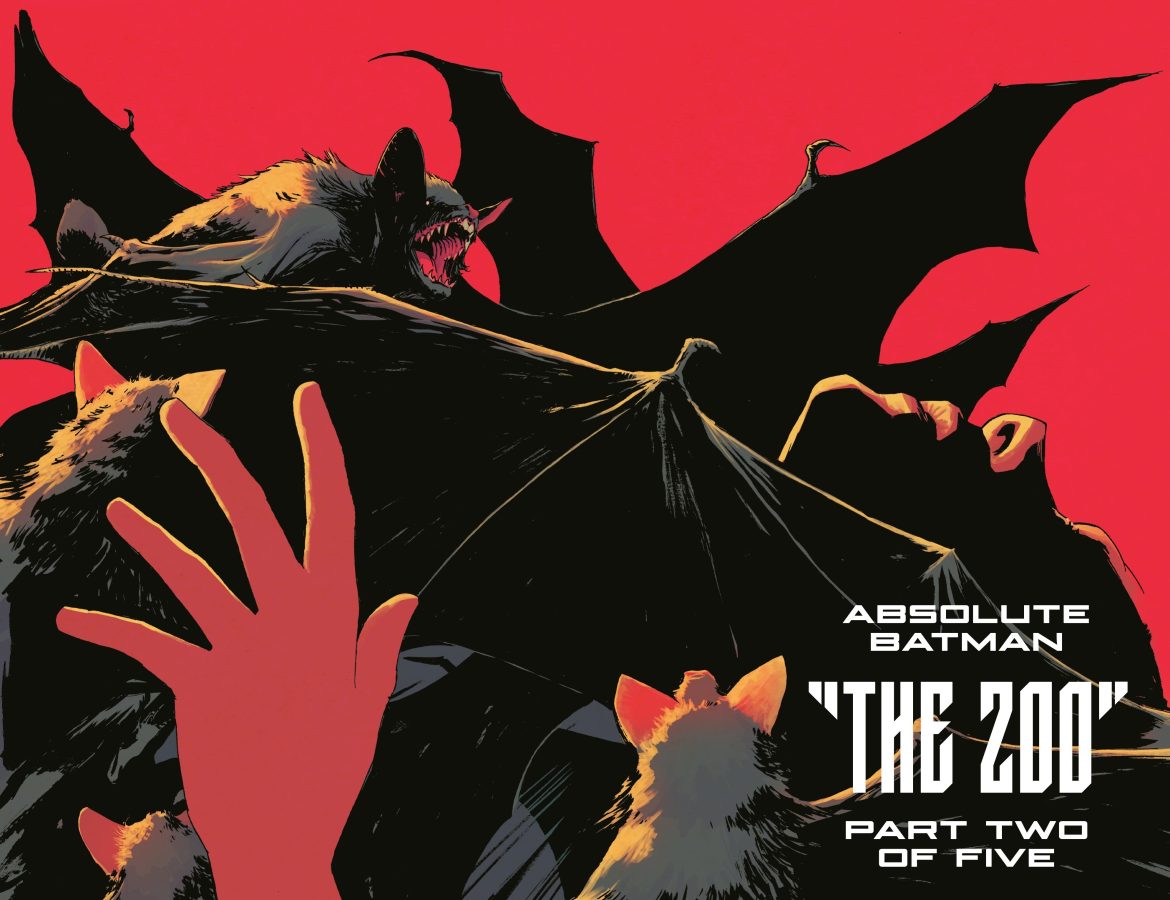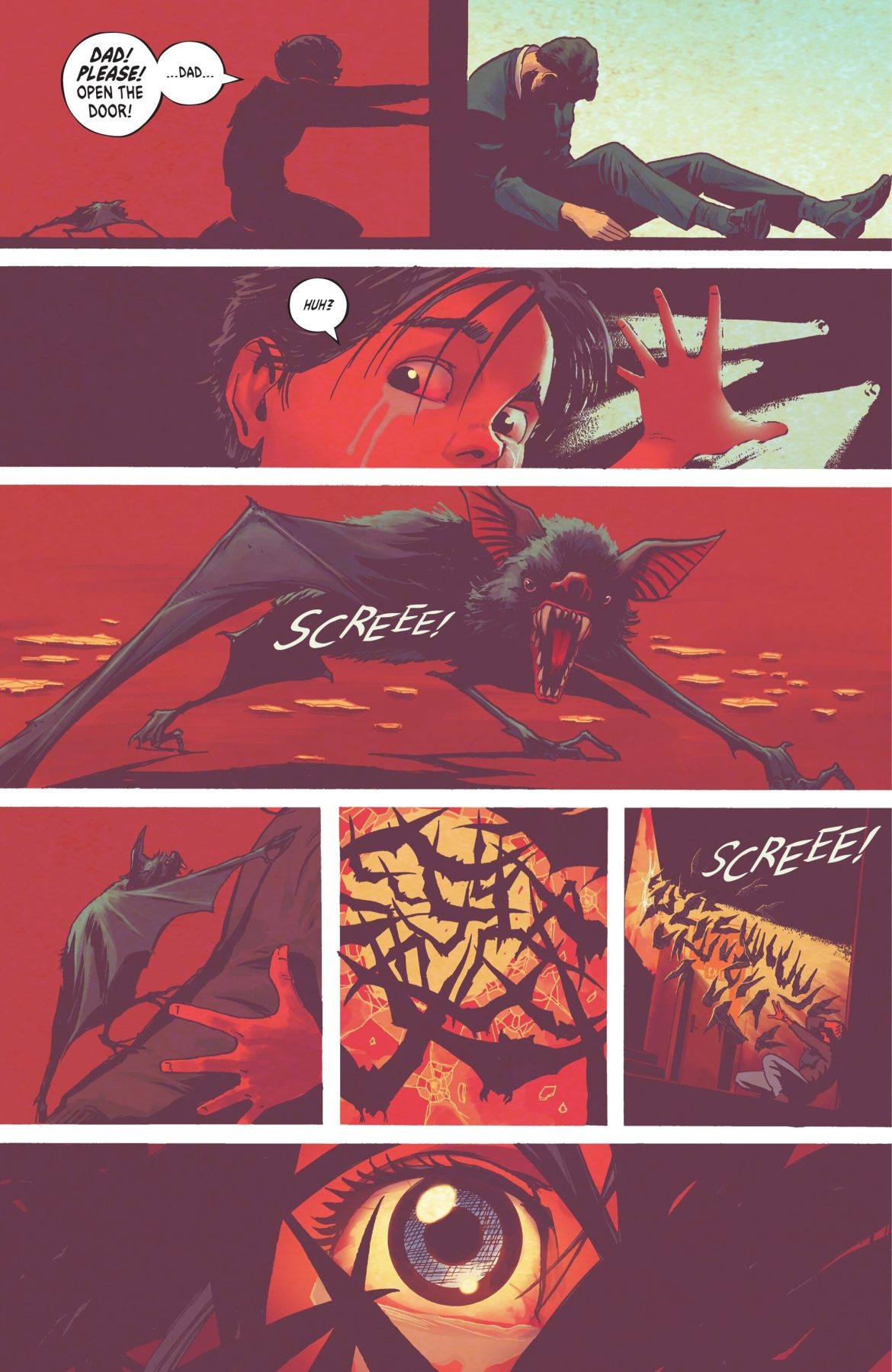“The Zoo” Part Two
Writer: Scott Snyder
Artists: Nick Dragotta
Color Artist: Frank Martin
Letterer: Clayton Cowless
Review by Bryant Lucas
The Dark Knight proves resilient against The Party Animals, as Pennyworth continues his surveillance in this week’s Absolute Batman #2.
In last month’s debut issue, readers were introduced to not only a new Batman but also a reimagined Alfred. Sent to Gotham by MI6, Alfred embarks on a surveillance mission to investigate a dangerous new gang known as The Party Animals. This isn’t his first time in Gotham—years earlier, he had built a life in the city. Upon his return, however, Alfred discovers an unexpected presence: a vigilante who goes by the name… Batman. Intrigued and unsettled, Alfred redirects his focus to unraveling the mystery of this new Dark Knight.
This week’s issue picks up with Alfred closely observing Batman and his crusade against The Party Animals. Leveraging his spy expertise, Agent Pennyworth quickly deduces Batman’s true identity. Meanwhile, Bruce Wayne digs deeper into the gang’s origins, uncovering connections to one of the candidates in Gotham’s heated mayoral race. But this revelation could prove perilous for the fledgling Caped Crusader, as the conspiracy threatens to put him in the crosshairs of danger.
On the Bat-Nose
Absolute Batman #2 showcases Scott Snyder’s deliberate attempt to build a distinct version of Gotham City, a challenge that requires walking a delicate tightrope. If this new Gotham mirrors its Earth-0 counterpart too closely, Snyder risks falling into the trap of recycling old Batman tropes. Why bother crafting an entirely new universe if it’s just the same stories in a different package? On the other hand, if Gotham veers too far from the familiar, it risks alienating longtime fans. How can it be called Batman when it feels nothing like the original? In short, Snyder is navigating a no-win scenario.
That said, Snyder manages to strike a balance that works—mostly. The Party Animals, for example, are a standout addition to the Batman mythos. Their vapid nihilism offers a sharp and fascinating critique of late-stage capitalism. Equally compelling is the reinvention of Alfred as a badass MI6 operative rather than the devoted butler. These fresh elements inject vitality into the story. However, Snyder’s efforts to incorporate other iconic aspects of Batman lore into this reimagined Gotham feel less successful, coming across as clumsy and overdone.
(Heads-up: spoilers ahead! If you’d rather avoid them, feel free to skip to the next section.)
One scene in particular illustrates this unevenness. Bruce attends a poker game with a group of friends: Harvey Dent, Oswald Cobblepot, Edward Nigma, and Waylon Jones. At first glance, this reimagining of Batman’s rogues gallery as a Friday-night poker club feels clever and fun. However, the execution leaves much to be desired. Snyder’s script is stuffed with forced, heavy-handed references: someone calls Harvey “two-faced”; Nigma wears a question mark pendant; and the scene concludes with the groan-worthy line, “Jokers are never welcome here, Bruce…”—a not-so-subtle nod to the absence of the Clown Prince of Crime.
For readers even casually familiar with Batman lore, these winks and nudges feel unnecessary and, frankly, clunky. The mere presence of these characters is enough to generate intrigue; there’s no need to underline their identities with such broad strokes. Snyder’s Gotham is at its best when it embraces subtlety and innovation, rather than relying on overworked cues to make its point.
A Bulky Hero on a Crowded Page
After reading Absolute Batman #2, I’m starting to appreciate Nick Dragotta’s aesthetic—albeit with some reservations. Letting go of traditional notions of what Batman “should” look like has allowed me to see Dragotta’s vision with fresh eyes. Historically, Batman has always been more brain than brawn. Yes, he’s strong, but his true power lies in his intellect—his ability to outthink and outmaneuver any opponent. Coupled with his lean physique, this made him a hero who triumphed with strategy over sheer force.
In contrast, Absolute Batman reimagines the Dark Knight as a physical powerhouse. Snyder and Dragotta seem to have flipped the script: while this Batman retains his tactical acumen, his defining characteristic is now his raw physical strength. Dragotta conveys this by giving Batman a physique more akin to Bane than his Earth-0 counterpart. This quasi-deconstruction of the character is intriguing, and while it’s still not my favorite interpretation, Absolute Batman provides a fresh and deliberate take that reflects intentionality and thought.
That said, the book’s artistic execution has its shortcomings. While Dragotta’s art is solid overall, some of the page layouts feel cluttered to the point of chaos. The poker scene, for example, suffers from serious overcrowding: two of its four pages contain 18 panels each. That’s an absurd number, and it turns the pages into a visual mess, making for a frustrating reading experience.
This issue, however, isn’t entirely Dragotta’s fault. Scott Snyder’s penchant for dense, wordy scripts is well-documented, and it’s likely Dragotta had little choice but to cram the dialogue into those 18-panel grids. The real solution would have been either more pages to accommodate the story or a tighter script with less dialogue. As it stands, the book feels like it’s bursting at the seams, detracting from the otherwise interesting narrative and bold artistic choices.
Conclusion
Absolute Batman #2 fits the mold of a typical second issue. First issues often start with a bang, setting the stage with energy and excitement, while the second installment tends to pull back, laying groundwork for the story to come. For me, this issue is a bit of a mixed bag.
There’s plenty to admire: Snyder’s narrative is undeniably compelling, and Dragotta’s artwork shines in key moments. However, the series still feels like it’s trying to find its rhythm. The potential for something truly great is here, but the title is experiencing a few growing pains as it balances its fresh take on Batman with the weight of its bold narrative choices.
That said, the positives outweigh the negatives, and there’s enough intrigue and promise to keep me invested in what’s to come. Absolute Batman might not have fully hit its stride yet, but it’s on the right track, and I’m eager to see where it goes from here.
Final Verdict: It’s far from flawless but still good.

Images Courtesy of DC Entertainment





